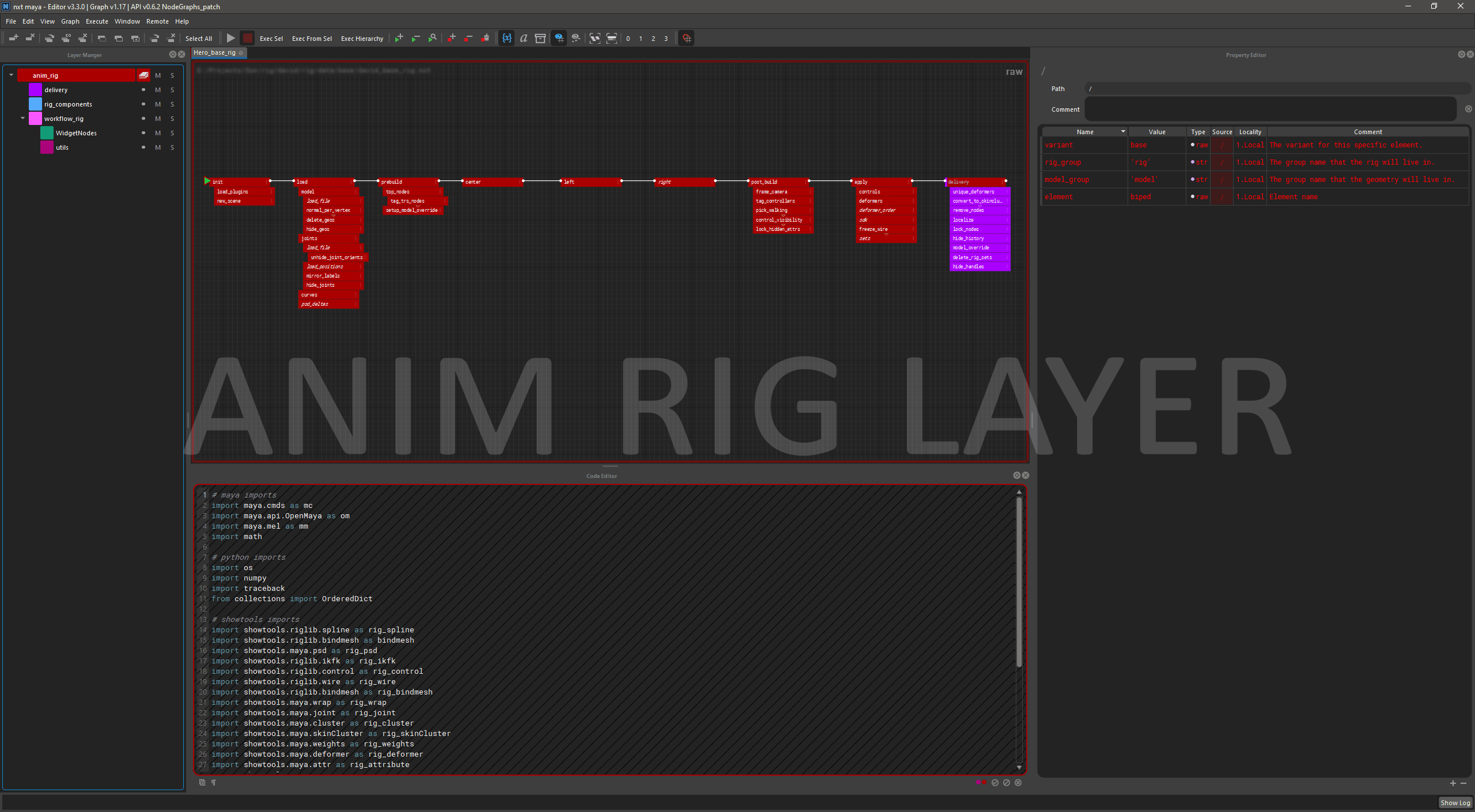Introduction
The primary function of nxt is to visualize and automate programming tasks related to computer graphics and linear processing. The intent is to bridge the gap between one-off scripting and general purpose tools through the use of inheritance, layering, and string tokens.
Why use nxt?
The core functionality of nxt was built with insights from industry veterans of various technical and artistic backgrounds. We set out to bring to the table a simple set of principles:
- Visualize a map of what a complex script is actually doing. Nodes, inheritance, and connection lines are easy to understand. However, we've gone a step further and added string tokens. An instant visualization of what an attribute value actually is. Our tokens can be used almost anywhere inside nxt and are dynamically "resolved" during execution. Allowing the user to see exactly what data is flowing around without the use of an external debugger.
- Encourage collaboration though layering and multi context graphs. With our layering system it is easy for departments to share base workflows and utility nodes. Since layering is non-destructive graphs can referenced built on without worrying about breaking someone else's graph. With multi context graphs a Maya user, for example, can directly call a Houdini graph from inside Maya. Alternatively, graphs can call other graphs in the same context, allowing interdependent graphs to be developed simultaneously.
- Make code accessible to everyone. Artists can modify attributes like their used to and learn to make simple code changes that normally would require a TD to intervene. We're not visual programming, but rather a friendly visual portal into code.
What does nxt do?
In the simplest of terms nxt combines multiple layers of nodes into a single composite layer that is then executable. Something like Photoshop layers for your code, you're able to mute, solo, override, and extend layers of code. The resulting composite of the code clearly visualizes where attributes and their values came from. Colors, node paths, and conveniently placed buttons/links allow users to quickly jump to and correct erroneous values.
Example character rig with a general to specific layer structure

Limitations
- We currently do not support asynchronous execution in a single graph. Our current focus is on lineal scripts.
- We are not visual programming, no for loop nodes sorry.
- We currently experimentally support Python 3, it is possible to lose layout and break point preferences by switching back and forth between Py2/3.
Special Thanks
Sunrise Productions
We would like to thank Sunrise Productions for providing us a studio incubator for 2019 and 2020. Sunrise kept food on the table and believed in nxt before it was fully realized. Without their support we would never have made it this far.
SVAD Productions
We would like to thank the School of Visual Art and Design NXT began in 2017 as a research project at SVAD. Originally with the goal to make it the core rigging framework, nxt quickly grew into the backbone of pipeline. We are grateful for SVAD providing the resources, education, and sponsorship to get us started.
| Walt Yoder | mGear (Miquel Campos) |
|---|---|
| Matt Schiller |
The nxt contributors
 Lucas Brown - Developer Lucas Brown - Developer |
 Michael Aldrich - Developer Michael Aldrich - Developer |
|---|---|
 Aaron Adams - Visionary & Founder Aaron Adams - Visionary & Founder |
 Zach Gray - Contributor Zach Gray - Contributor |